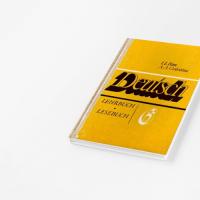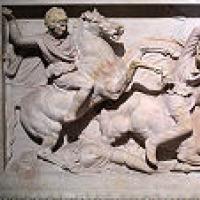A ship made of geometric shapes for children. Application of geometric shapes: a boat outline of a lesson on technology (grade 2) on the topic. How to make a do-it-yourself paper boat applique
Didactic game math for kids senior group DOW
Description: the material will be interesting and useful to preschool teachers, employees additional education, leaders of "Entertaining mathematics" circles, parents
Purpose: the material can be used as a didactic game, as part of a lesson on FEMP, applications, design, in individual work, in independent activities of children
Integration: cognitive, speech, social and communicative, artistic and aesthetic development
Target: the formation of the ability to design from geometric shapes
Tasks:
educational: teach children to arrange geometric shapes according to chart tables;
developing: develop an eye, visual memory, orientation in space;
educational: educate interest in the construction of geometric shapes.
Methods and techniques: game, visual, independent activity of children, individual tasks, use of artistic word
Preliminary work: classes on FEMP in the sections "Geometric shapes", "Orientation in space", classes on applications on the topic "Panel of geometric shapes", designing from a flat and three-dimensional constructor in the corner "Young Builder"
Plan:
1. Conversation about modes of transport.
2. Design according to tables-schemes.
3. Didactic task "Think up yourself"
4. Application work.
5. Bottom line. Analysis.
The content of the work:
1.Educator:
People have always believed in miracles and composed fairy tales about Carpet - Plane, Emelin Oven, Boots - Walkers because there was always a need to move somewhere. But this is all a fabulous, fake transport that "works" only in a fairy tale.
And in our life, transport is different - this is what actually moves: it travels, swims, flies, transports goods, passengers. If we need to go somewhere, swim, fly, we use transport.
What types of transport do you know?
Children's answers:
- ground: car, bus, bike, motorcycle...
- underground: metro
- air: airplane, helicopter, rocket, balloon...
- water: ship, boat, boat, yacht ...
2.Educator: I will make riddles about transport. Whoever guesses, receives a table-diagram and adds up what he guessed.
1) What kind of bird:
Doesn't sing songs
Doesn't make a nest
Carrying people and goods?
Look, the plane
He sings a song to us:
U-U-U
I'll fly to the sky soon!
2) Give me an answer as soon as possible:
A few years will pass
And from the earth faster than light
It will fly to the stars ... (rocket)

Here's a rocket under the rainbow
Soared to the sky
And the same rocket
I built it myself!
3) The palace floats on the waves -
It carries people.

Sailing, sailing boat
To distant lands.
Who is the captain of the ship?
of course it's me!
4) What a miracle - a long house,
There are many passengers in it
Wears rubber shoes
Does it feed on gasoline?

Stop empty:
Everyone is on the bus, inside.
And now half the battle
Take everyone home.
5) And we have fun in the family:
We celebrate housewarming.
Moved in a moment
and helped us ... (truck)

Why our truck
Are you used to being lazy?
On the back, he carries a body for large and small loads.
6) I drink gasoline and eat oil,
At least not hungry at all.
And without them I'm so sick
That I can't go!
I am so shiny
And, of course, light.
On the road I rush with an arrow -
Don't chase after me!

3. Educator: And now I suggest you come up with your own model of transport from the same sets.

4. Educator:
What type of transport would you like to stick and decorate our exhibition?
Answers and choice of children.

5.Educator:
Summarize:
What were we doing? (designed according to the tables-schemes types of transport)
What have you learned? (construct modes of transport from geometric shapes)
What did you like? (guess riddles, stick geometric shapes ...)
Tangram - an old oriental puzzle of figures obtained by cutting a square into 7 parts in a special way: 2 large triangles, one medium, 2 small triangles, a square and a parallelogram. As a result of folding these parts with each other, we get flat figures, the contours of which resemble all kinds of objects, ranging from humans, animals and ending with tools and household items. These types of puzzles are often referred to as "geometric construction sets", "cardboard puzzles" or "cut puzzles".
With a tangram, a child will learn to analyze images, highlight geometric shapes in them, learn to visually break an entire object into parts, and vice versa - to compose a given model from elements, and most importantly - to think logically.
How to make a tangram
A tangram can be made from cardboard or paper by printing out a template and cutting along the lines. You can download and print the tangram square diagram by clicking on the picture and selecting "print" or "save picture as...".

It is possible without a template. We draw a diagonal in a square - we get 2 triangles. Cut one of them in half into 2 small triangles. We mark the middle on each side of the second large triangle. We cut off the middle triangle and the rest of the figures at these marks. There are other options for how to draw a tangram, but when you cut it into pieces, they will be exactly the same.
A more practical and durable tangram can be cut from a rigid office folder or a plastic DVD box. You can complicate your task a little by cutting out tangrams from pieces of different felt, overcasting them around the edges, or even from plywood or wood.
How to play tangram
Each figure of the game must be made up of seven parts of the tangram, and at the same time they must not overlap.
The easiest option for preschool children 4-5 years old is to assemble figures according to diagrams (answers) drawn into elements, like a mosaic. A little practice, and the child will learn to make figures according to the contour pattern and even invent their own figures according to the same principle.
Level one - download and print a colored tangram, so it will be easier to navigate the diagram.




Schemes and figures of the game tangram
















Recently, designers have often used tangram. The most successful use of tangram, perhaps, as furniture. There are tangram tables, and transformable upholstered furniture, and cabinet furniture. All furniture, built on the principle of tangram, is quite comfortable and functional. It can be modified depending on the mood and desire of the owner. How many different options and combinations can be made from triangular, square and quadrangular shelves. When buying such furniture, along with instructions, the buyer is given several sheets with pictures on various topics that can be folded from these shelves.In the living room you can hang shelves in the form of people, in the nursery you can put cats, hares and birds out of the same shelves, and in the dining room or library - the drawing can be on a construction theme - houses, castles, temples.
Here is such a multifunctional tangram.
The bell has already rung
He told us: "Lesson!"
Everyone sit down quietly
Get to work.
Guys, look at each other and smile. Give a smile to yourself, to each other, to me. And I give a smile to you. And joy will help us in our work! Do you see everything in your workplace? Colored paper in place? Glue, glue brush in place? Scissors, a simple pencil in place? Well done!
Today we are going with you to a fairy-tale country, and it is called “Figured”, and we will get to know its inhabitants.
Would you like to meet the people of this country? Guess the riddles:
1) I have no corners
And I look like a saucer.
On a plate and on a lid
On the ring, on the wheel.
Who am I, friends? (a circle)
What objects are shaped like a circle?
Give your examples.
2) He has known me for a long time,
Every corner is right.
All four sides
Equal length.
I'm glad to present it to you
And his name is ……… (square)
What objects are shaped like a square?
Give your examples.
3) Three corners,
three sides
May be of different lengths. (triangle)
What objects are shaped like a triangle?
But before we get started, let's do the exercises for our fingers.
What geometric shapes do you know?
See what parts the boat consists of?
Guys, everyone has patterns of geometric shapes on their desks.
The template is the markup for our details. You will work with them in class. Let's remember how to work with a template?
- When tracing the template, make sure that it does not move to the side.
- Hold the template tightly with one hand, and trace it with a pencil along the contour with the other hand.
- We make markings on the white side of the paper.
Orange
(Hand clenched into a fist)We shared an orange.
(Turn the fist left and right)There are many of us, and he is one!
(With the other hand, we unbend the fingers folded into a cam, starting with the big one)This hedgehog slice
(Extend index finger)This slice is for a siskin,
(Unbend the middle finger)This slice is for ducklings,
(Unbend the ring finger)This slice is for kittens
(Unbend the little finger)This slice is for the beaver
(Turn your open palm left and right)Well, the wolf is peeled.
(With two hands we show the wolf's mouth)He is angry with us - trouble!
(We fold our hands like a house)Hiding in the house - here!
Guys, but every business is built according to plan. Look at the desk. This is the plan we will be working on:
- Circle (observe color);
- Cut out (don't forget the quantity);
- Check (by templates);
- Collect;
- Glue (look at the product).
Guys, let's remember the rules for working with scissors.
1. Do not leave scissors open.
2. Work with them only at your workplace.
3. Be careful not to injure the fingers of your left hand.
4. Turn the paper when cutting out the details.
5. Cut with the middle part of the blades, opening and closing the scissors.
Monitor the work of each student. Help students when they encounter difficulties.
Guys, let's look at our work.
(Pay attention to the accuracy, correctness of the work performed)
Whose work did you like the most and why?
Guys, stand up, please, those who liked the lesson?
What did you like?
What did we do in class?
In this master class, I will show you how to make an application - a do-it-yourself paper boat with step-by-step photos. Such a boat can be used when creating postcards or as a gift for dad and grandfather.
What would you like to be when you grow up? Boys very often answer this question that they want to become a pilot, driver or sea captain. Unfortunately, life doesn't always work out the way you want. But no matter how fate develops, you must always strive for your dream.
If your son is still small, but already dreams of sea trips, then it is in your power to support him in this. You can start by making a small paper boat, which may be the first step towards fulfilling your child's dream. The manufacturing process - how to make it in the form of an application is shown in this master class.
How to make a do-it-yourself paper boat applique
To create such a craft, we prepared:
- a square sheet of one-sided colored paper;
- black marker.

First, our workpiece needs to be bent along diagonal lines.

Now we bend one of the corners (we took the top one for convenience) to the very center of the workpiece.

The same bent corner must be bent up.

Finally, we make another fold of the same corner, but this time we bend it down.

We fold the blank of the future boat along in half.

It remains for us to form the side of our ship. To do this, you need to bend the bottom part up at a slight angle. The width of this fold will determine the height of the bead.

Now the place of the fold needs to be straightened so that the colored paper is outside.

If necessary, the inner sides of the application can be fastened with a little glue.

The final stage of our craft will be drawing portholes. We apply them with a black felt-tip pen.




